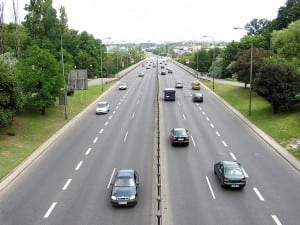Could self-driving cars prevent accidents?
 Self-driving cars have long been included in science fiction books and movies as the stuff of fiction. However, if companies like Google have their way, self-driving cars may someday soon transcend fiction to become reality.
Self-driving cars have long been included in science fiction books and movies as the stuff of fiction. However, if companies like Google have their way, self-driving cars may someday soon transcend fiction to become reality.
In recent news, Google has predicted that self-driving cars will be available to Americans in three to five years. In a meeting in Washington, a product manager for Google’s self-driving car told the Society of Automotive Engineers, “The improvement can be such that we can make cars that drive safer than people do. I can’t tell you you’ll be able to have a Google car in your garage next year. We expect to release the technology in the next five years. In what form it gets released is still to be determined.”
Companies like Google and transportation safety regulators are excited by the prospect of the self-driving car. By removing “human error” from driving, it could be possible to seriously reduce the number of crashes and fatalities from car accidents. Each year, approximately 33,000 Americans are killed in car crashes. Though that number has been decreasing in previous years, it is still of concern.
Regulators, the insurance industry, and others aren’t quite convinced that Google can pull off their time frame estimated. There are a number of obstacles that stand in the way of the self-driving car.
First, the technology is still fairly far off. Though we now have cars with back-up cameras and other accident avoidance systems, fully autonomous cars are a large leap in technology. In particular, a self-driving car would need to have perfectly reliable software “because a failure would mean nothing is controlling the vehicle.” An autonomous car would need to be “taught” how to respond to a number of different situations with little to no error. The most tricky of these situations might be the human judgment needed to recognize that toys in the street likely indicate that there are children playing nearby—and that the driver should use extra caution.
In addition to the software hurdle, federal and state regulation would have to catch up with the self-driving car. Many of the standards currently in place under the National Highway Traffic Safety Administration were created in the 1970s, long before today’s new technology. The NHTSA would have to create new standards and determine how to test them.
Finally, there is the question of deciding fault. Most often, a car accident occurs because of an error on the part of another driver. Inattentive driving, or distracted driving, can slow a driver’s reaction time when braking, cause them to drift into another lane, or prevent them from recognizing their speed. With a self-driving car, who would be at fault if an accident occurred? Insurance companies would have to determine where to assign blame—whether to the manufacturer, the company who designed the car, or the software in place.
The questions represent a technical, regulatory, and legal mess that will be sorted out as driverless cars become a reality for American drivers.
